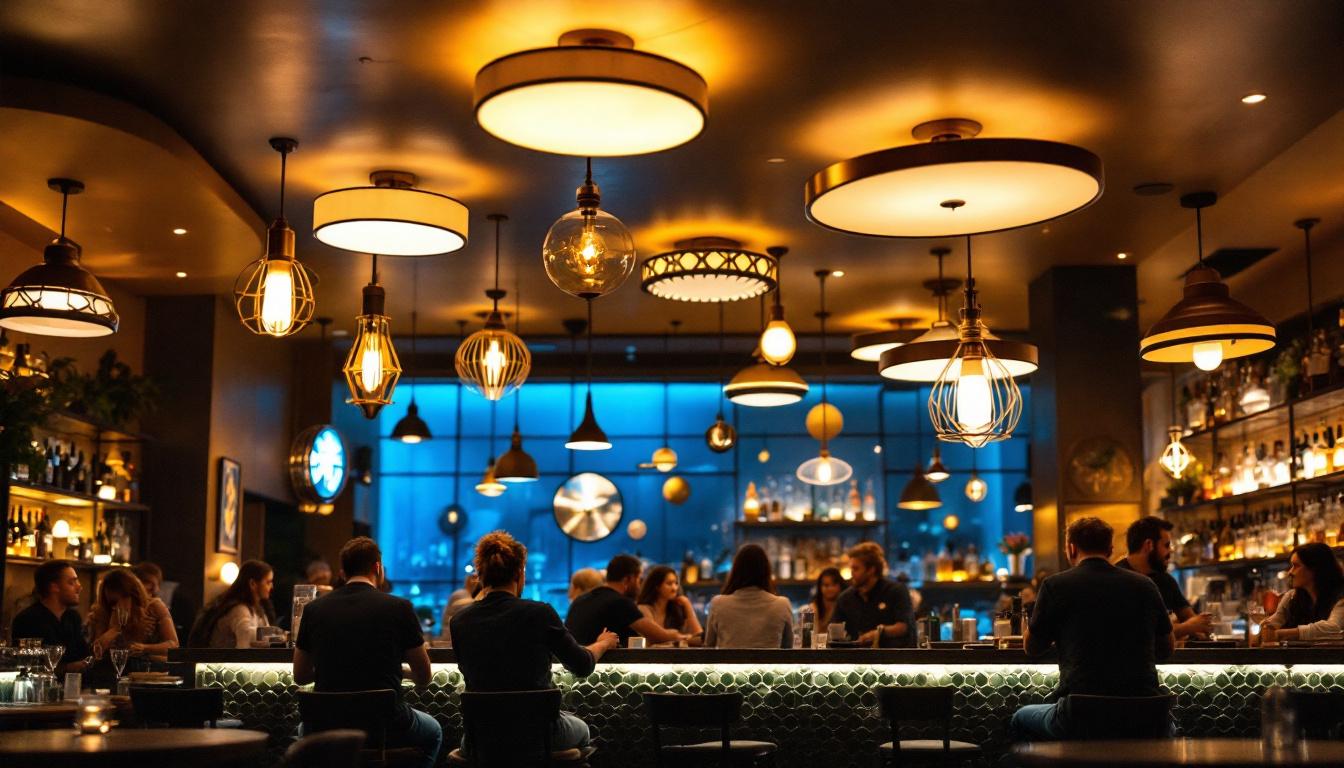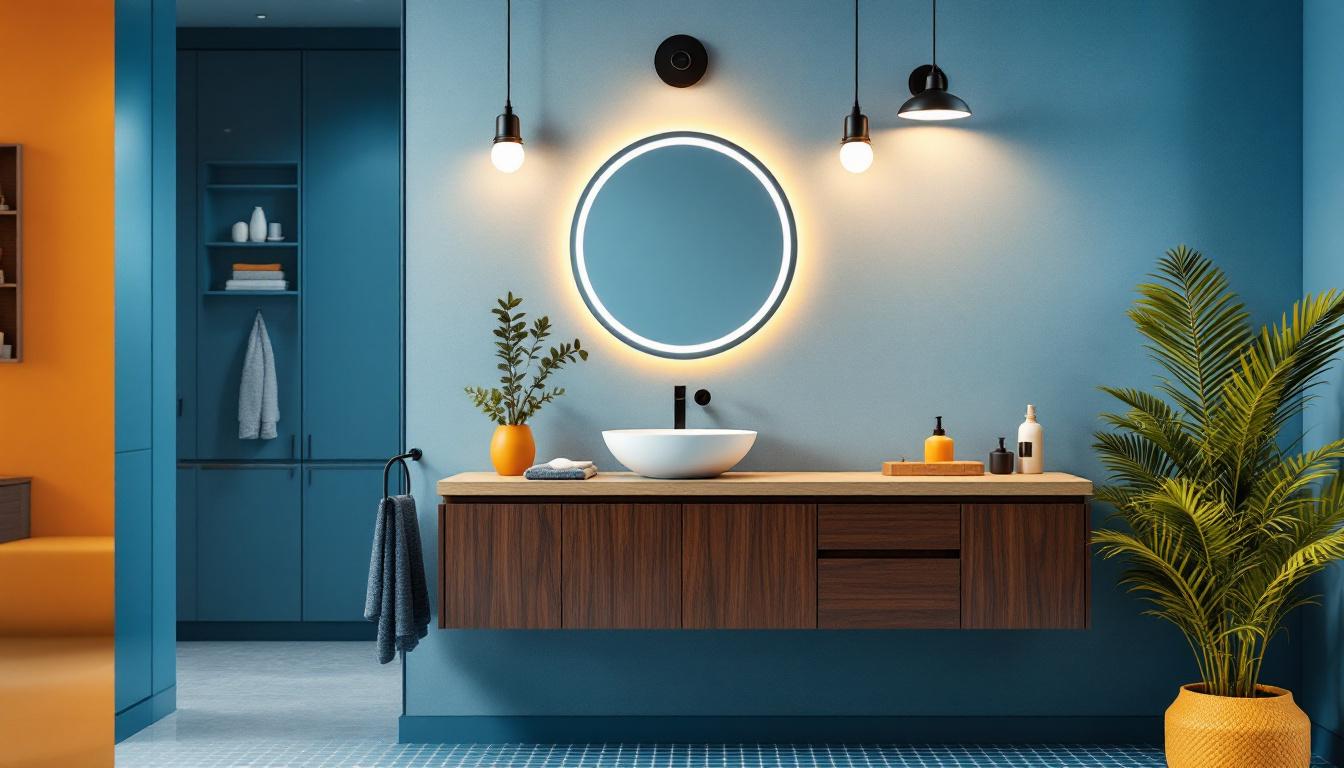
Lighting plays a crucial role in the ambiance and functionality of a bar. For lighting contractors, mastering the art of ceiling lighting can elevate a bar’s aesthetic while ensuring it meets the practical needs of both patrons and staff. This article delves into essential resources and strategies for selecting and installing ceiling lights that enhance the bar experience.
Before diving into specific lighting options, it’s important for lighting contractors to understand the unique requirements of bar environments. Bars often serve multiple purposes, from casual gatherings to lively nightlife, which means lighting must be versatile.
Factors such as the bar’s layout, the type of clientele, and the overall theme influence lighting choices. A well-lit bar can create an inviting atmosphere, while poorly designed lighting can detract from the experience. The right lighting not only enhances the aesthetic appeal but also plays a crucial role in the functionality of the space, affecting everything from mood to safety.
The layout of a bar significantly impacts lighting design. Open spaces may require different lighting strategies compared to more segmented areas. For instance, a large, open bar area might benefit from a combination of ambient and task lighting, while a more intimate setting may focus on softer, accent lighting.
Consideration of seating arrangements, bar height, and the placement of key features like the bar counter or stage areas is essential. Properly assessing these elements allows for a tailored lighting solution that enhances the overall atmosphere. Additionally, the use of dimmable lighting fixtures can offer flexibility, enabling the bar to transition from a vibrant social hub during peak hours to a more subdued environment for late-night conversations.
Understanding the target clientele can guide lighting choices. For example, a trendy cocktail bar may opt for dim, moody lighting to create a chic vibe, while a family-friendly pub might require brighter, more inviting illumination.
Gathering feedback from patrons can also provide insights into their preferences. Surveys or informal conversations can help gauge what lighting styles resonate with the audience, allowing contractors to make informed decisions. Furthermore, observing peak hours and the types of activities that occur can inform adjustments to lighting levels and colors, ensuring that the ambiance aligns with the energy of the crowd. Incorporating elements like color-changing LED lights can also add an exciting dynamic, allowing the bar to adapt its lighting scheme to special events or themed nights, thereby enhancing the overall customer experience.
There are various types of ceiling lights available that can be effectively used in bar settings. Each type serves a different purpose and can contribute to the overall design aesthetic.
Pendant lights are a popular choice for bars due to their versatility and style. They can be hung at varying heights to create visual interest and can be used to highlight specific areas, such as the bar counter or seating arrangements.
When selecting pendant lights, consider the scale and design of the fixtures. Larger, statement pieces can serve as focal points, while smaller pendants can be grouped for a layered effect. Additionally, the choice of materials and finishes can complement the bar’s overall theme. For instance, industrial-style bars may benefit from metal or Edison bulb fixtures, while a more upscale venue might opt for glass or crystal pendants to enhance the elegance of the space. The color of the light bulbs used in these fixtures can also influence the mood; warm tones create a cozy atmosphere, while cooler tones can lend a more vibrant, energetic feel.
Recessed lighting offers a sleek, modern look that can seamlessly blend into the ceiling. This type of lighting is ideal for creating a clean, unobtrusive ambiance while providing ample illumination.
Recessed lights can be strategically placed to highlight specific areas or features within the bar. Dimming capabilities can also enhance the versatility of recessed lighting, allowing for adjustments based on the time of day or event type. For example, during a lively happy hour, the lights can be brightened to create an energetic vibe, while later in the evening, they can be dimmed to foster a more intimate atmosphere. Additionally, the use of color-changing LED recessed lights can add a dynamic element, allowing bars to shift their lighting scheme to match special events, seasonal themes, or even the mood of the crowd.
Track lighting provides flexibility and adaptability, making it an excellent choice for bars that frequently change their layout or decor. With adjustable fixtures, track lighting can be directed to illuminate various areas as needed.
This type of lighting is particularly useful for highlighting artwork, special promotions, or themed decorations. Additionally, track lighting can be combined with other lighting types to create a layered effect, enhancing the overall atmosphere. For instance, pairing track lighting with ambient lighting can create a well-rounded experience, allowing patrons to appreciate both the decor and the vibrant energy of the bar. Furthermore, the ability to easily reposition track lights means that bars can keep their lighting fresh and exciting, adapting to new themes or seasonal changes without the need for extensive renovations. This versatility not only saves time but also allows bar owners to experiment with different lighting arrangements to find the perfect balance for their unique space.
The type of bulbs used in ceiling lights can significantly affect the quality of light and energy efficiency. Lighting contractors must consider various factors when selecting bulbs for bar environments.
LED bulbs are increasingly popular in commercial settings due to their energy efficiency and longevity. They produce less heat and consume significantly less energy than incandescent bulbs, making them a cost-effective choice in the long run.
However, incandescent bulbs offer a warm glow that some may prefer for creating a cozy atmosphere. It’s essential to weigh the pros and cons of each type based on the bar’s specific needs and aesthetic goals.
Color temperature plays a vital role in setting the mood of a bar. Measured in Kelvin (K), the color temperature of bulbs can range from warm (2700K) to cool (5000K). For bars, warmer temperatures are often preferred to create a welcoming environment.
However, certain areas may benefit from cooler lighting, particularly in spaces where food preparation occurs. Understanding the desired ambiance can guide the selection of appropriate color temperatures for different areas within the bar.
Incorporating advanced lighting control systems can enhance the functionality and versatility of bar lighting. These systems allow for easy adjustments to brightness and color, enabling contractors to create dynamic environments that adapt to different occasions.
Dimming options are essential for bars that host various events throughout the day. A dimmer switch allows for quick adjustments, enabling the lighting to transition from bright and lively during happy hour to soft and intimate during late-night hours.
Moreover, dimming can help save energy and extend the lifespan of bulbs, making it a practical choice for busy bar environments.
Smart lighting solutions offer an innovative approach to bar lighting. These systems can be programmed to change based on time, occupancy, or specific events. For instance, a bar could automatically dim the lights during live music performances or brighten them during busy hours.
Integrating smart technology can also enhance the overall customer experience, allowing for a more tailored atmosphere that aligns with the bar’s branding and clientele preferences.
Proper installation is crucial for ensuring that ceiling lights function effectively and safely. Lighting contractors should adhere to best practices to guarantee optimal performance and compliance with safety regulations.
Before installation, it is essential to assess the electrical system of the bar. Ensuring that the wiring can support the chosen lighting fixtures is vital for safety and functionality. Contractors should also consider the load capacity and any necessary upgrades to accommodate new lighting systems.
Additionally, following local electrical codes and regulations is imperative to ensure compliance and avoid potential hazards.
The placement and spacing of ceiling lights can significantly impact the overall lighting quality. Contractors should consider the height of the ceiling, the size of the bar, and the intended lighting effect when determining fixture placement.
A general rule of thumb is to space fixtures evenly to avoid dark spots and ensure consistent illumination. For pendant lights, hanging them at varying heights can create visual interest while providing adequate lighting.
Regular maintenance is essential for keeping bar lighting in optimal condition. Lighting contractors should educate bar owners on the importance of routine checks and upkeep to ensure longevity and performance.
Dust and debris can accumulate on light fixtures, diminishing their effectiveness. Regular cleaning is necessary to maintain brightness and clarity. Contractors should recommend a cleaning schedule that aligns with the bar’s operational hours.
Additionally, keeping track of bulb lifespans and replacing them promptly can prevent dim lighting and ensure a consistently inviting atmosphere.
As technology evolves, upgrading lighting systems can enhance energy efficiency and functionality. Contractors should stay informed about the latest advancements in lighting technology and recommend upgrades when appropriate.
Encouraging bar owners to invest in modern lighting solutions can lead to improved customer experiences and reduced operational costs over time.
Mastering ceiling lighting for bars requires a thoughtful approach that considers the unique needs of the environment. By understanding the layout, clientele preferences, and various lighting options, lighting contractors can create tailored solutions that enhance the bar experience.
From selecting the right types of fixtures to implementing effective control systems, every decision contributes to the overall ambiance and functionality of the space. Regular maintenance and staying updated on industry trends are also vital for ensuring long-term success in bar lighting.
By leveraging these resources and strategies, lighting contractors can elevate their expertise and deliver exceptional lighting designs that leave a lasting impression on patrons and bar owners alike.
Ready to transform the lighting in your next bar project? At LumenWholesale, we provide lighting contractors with an exceptional range of spec-grade ceiling lights that combine quality and style, all at unbeatable wholesale prices. Say goodbye to inflated markups and hello to a curated selection that meets the highest industry standards. With our hassle-free bulk buying and free shipping, you can trust that you’re getting premium lighting at the best value — without any hidden fees. Elevate your lighting designs and impress your clients by choosing LumenWholesale, where quality, affordability, and convenience come together seamlessly. Discover our extensive selection and take advantage of the best value in wholesale lighting by visiting Wholesale Lighting at the Best Value.

Discover the must-have tools and insights for lighting contractors navigating the transition from traditional lighting to LED HID replacements.

Discover effective strategies for training your team in can light replacements with our comprehensive guide.

Explore the science and practicality of using LED rope light corner mounts on mirrors in this insightful guide for lighting contractors.

Discover the essential insights lighting contractors need to master vanity lighting projects.